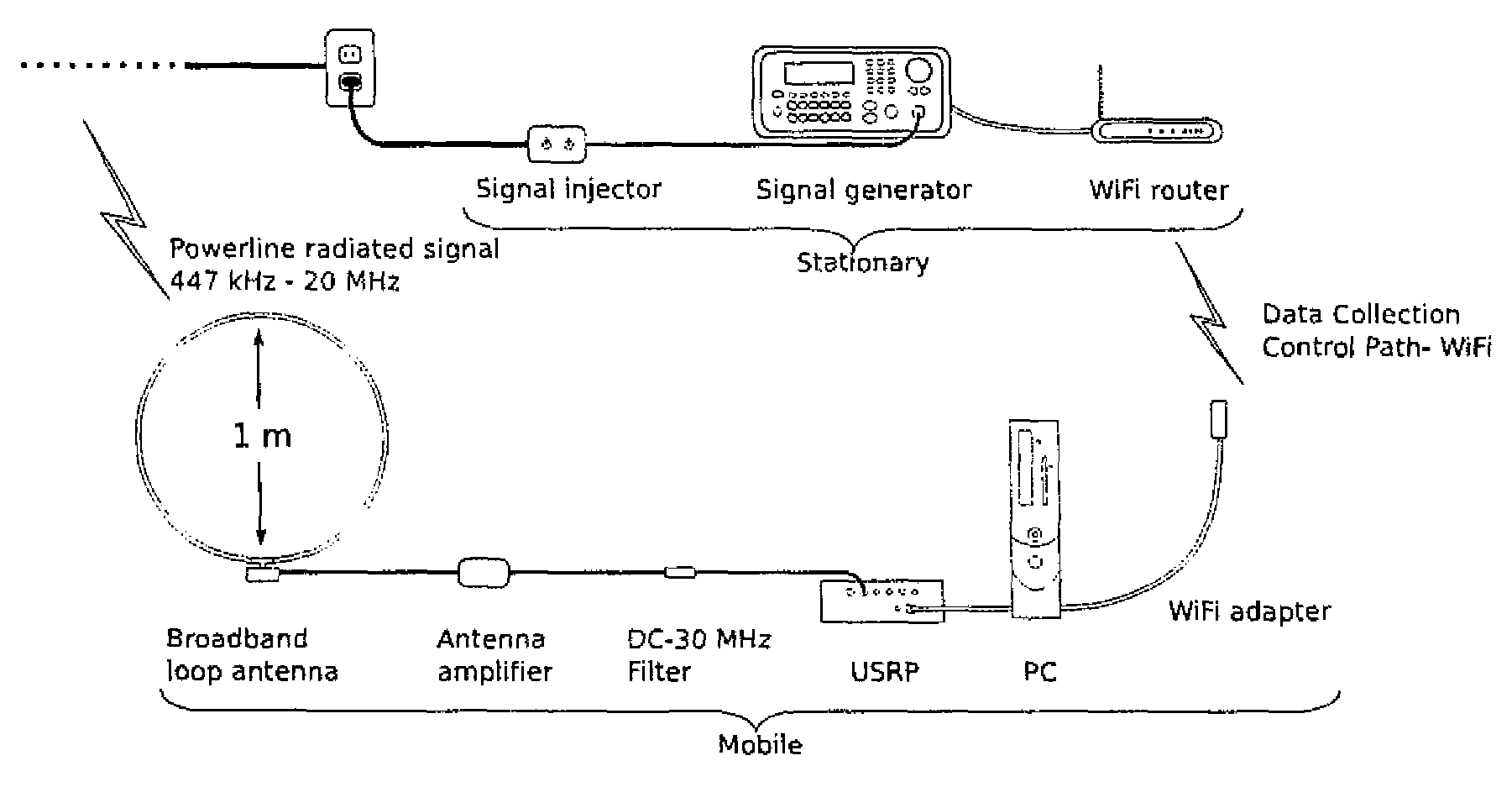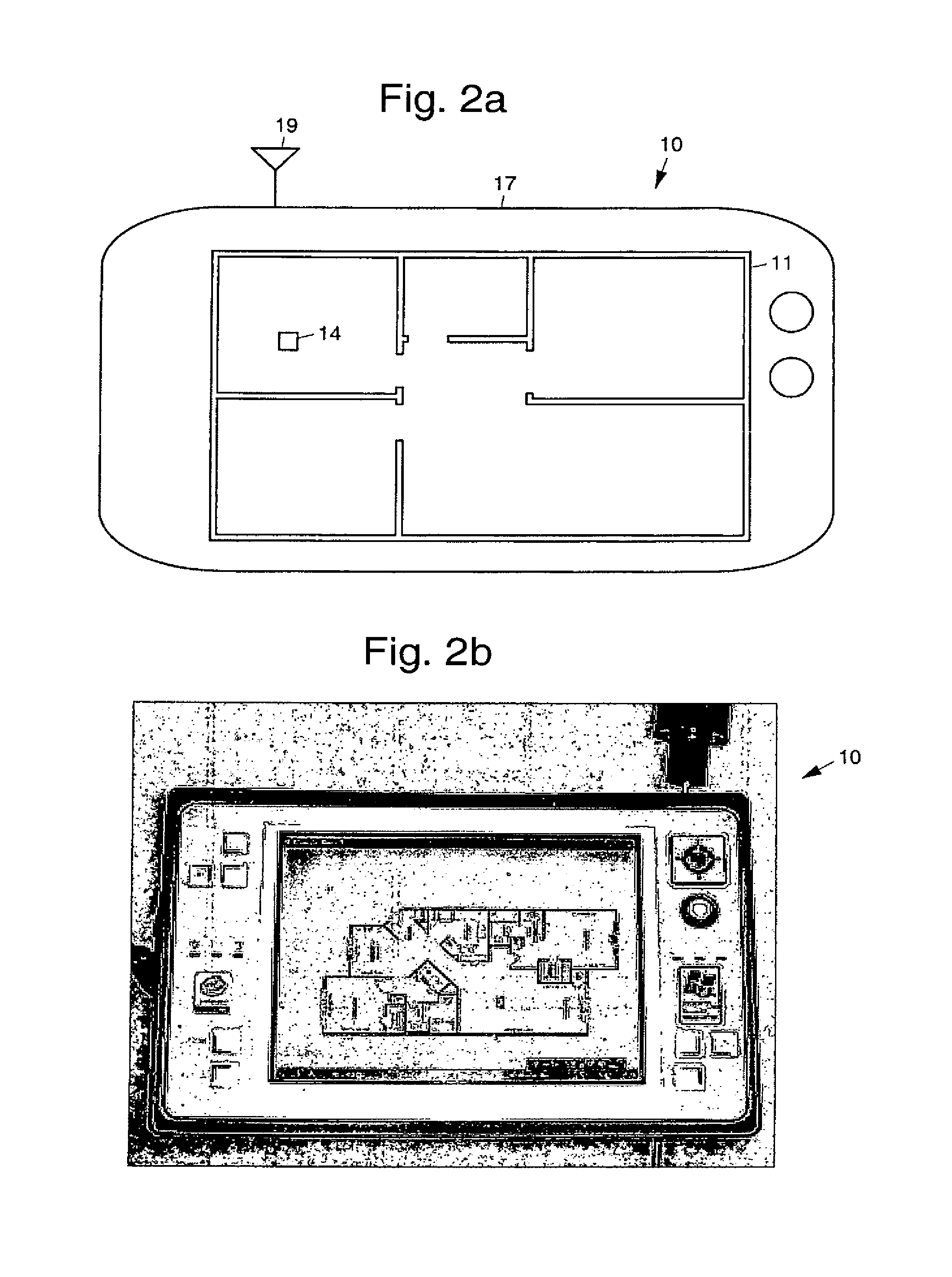Sub room level indoor location system using wideband power line positioning
a technology of power line positioning and indoor location, applied in direction finders using radio waves, navigation instruments, instruments, etc., can solve the problems of accuracy degradation of fingerprinting-based localization systems, and achieve the effects of reducing performance degradation, improving initial post-deployment accuracy of the system, and increasing the size of wideband signal fingerprints
- Summary
- Abstract
- Description
- Claims
- Application Information
AI Technical Summary
Benefits of technology
Problems solved by technology
Method used
Image
Examples
Embodiment Construction
[0037]Disclosed is an exemplary indoor location system that uses an electrical power line as a signaling infrastructure to simultaneously track multiple objects, and which may be used in buildings or structures, such as homes and business buildings, and the like. An affordable, whole-building indoor localization system is described below, that works in a vast majority of households, scales cost-effectively to support tracking of multiple objects simultaneously and does not require the installation of additional new infrastructure. The solution requires installation of at least two transmission modules that are connected to or plugged-into a building's electrical system at different locations within the building. These modules inject a low-frequency, attenuated signal throughout the electrical system of the building. Simple receivers, or positioning tags, listen for these signals and wirelessly transmit their positioning readings back to a base station. The base station is used to pr...
PUM
 Login to View More
Login to View More Abstract
Description
Claims
Application Information
 Login to View More
Login to View More - R&D
- Intellectual Property
- Life Sciences
- Materials
- Tech Scout
- Unparalleled Data Quality
- Higher Quality Content
- 60% Fewer Hallucinations
Browse by: Latest US Patents, China's latest patents, Technical Efficacy Thesaurus, Application Domain, Technology Topic, Popular Technical Reports.
© 2025 PatSnap. All rights reserved.Legal|Privacy policy|Modern Slavery Act Transparency Statement|Sitemap|About US| Contact US: help@patsnap.com



